15 Interesting Facts about Leonardo da Vinci
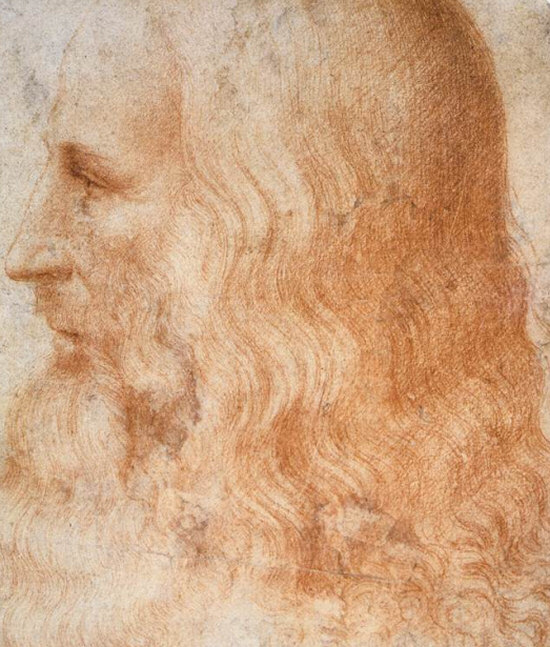
Despite gaining worldwide popularity nearly 500 years ago, Leonardo da
Vinci's paintings, inventions and documents are still scientifically relevant,
even in today's digitized age. Leonardo's ability to understand light and form
is demonstrated in his prototypes - some of which include one of the earliest
computer designs in history as well as some of the first plans for flying
machines.
The painter and polymath was also an engineer, conceptualizing such ideas as
the tank, solar power, the helicopter, and the calculator. While most of the
ideas were merely sketches of ideas during da Vinci's time, some inventions,
such as a tensile strength machine and a bobbin winder, were actually
incorporated into manufacturing and industrial environments. Da Vinci's
scientific ability also extended to such fields as hydronomics, anatomy, optics
and civil engineering.
Design for a Flying Machine - Codex Alanticus
Drawing by da Vinci:
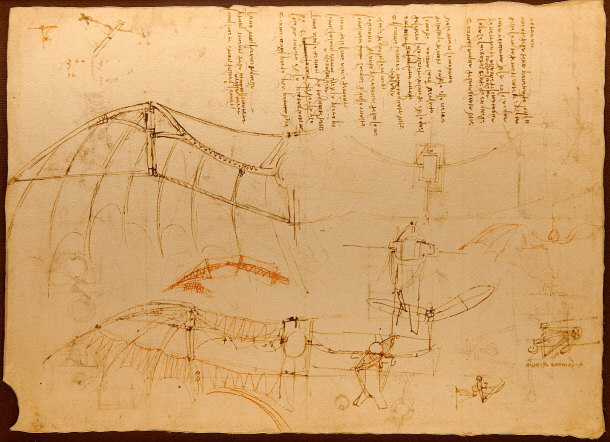
Being a polymath caused da Vinci to dabble in a variety of disciplines, all
which were central to the period of the High Renaissance. All in all, da Vinci
accomplished himself as a painter, sculptor, architect, musician, mathematician,
engineer, anatomist, cartographer, geologist, botanist, and writer.
Indeed, da Vinci made his mark in Renaissance history as the feudalistic
populace before that time sought guidance, intellectually and spiritually, from
their queens and kings. Basic questions regarding man's anatomy were considered
taboo, even when da Vinci's now world-famous illustration, the Vitruvian Man,
was sketched and introduced in 1487. The sketch of the naked man was made to
show the beauty of the human form.
Leonardo da Vinci's Vitruvian Man - 1492:
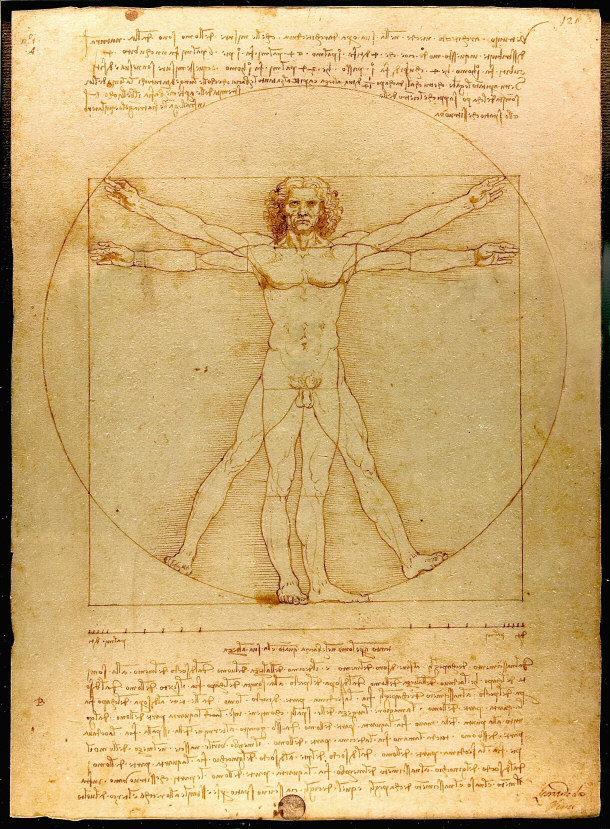
Although the over 13,000 sketches and notes that da Vinci made during his
life are considered crude by today's standards, they were really
state-of-the-art concepts during Renaissance times. During the Renaissance,it
was necessary for artists to pick up the skills of an anatomist as dissection
was a restricted practice. In order to draw, paint or sculpt lifelike images of
the human form, a knowledge of the anatomy was essential. Therefore, during the
time period, or from 1500 to 1510, investigations by artists often surpassed the
anatomical education of university students.
Studies of Embryos - Leonardo da Vinci (1510-1513):
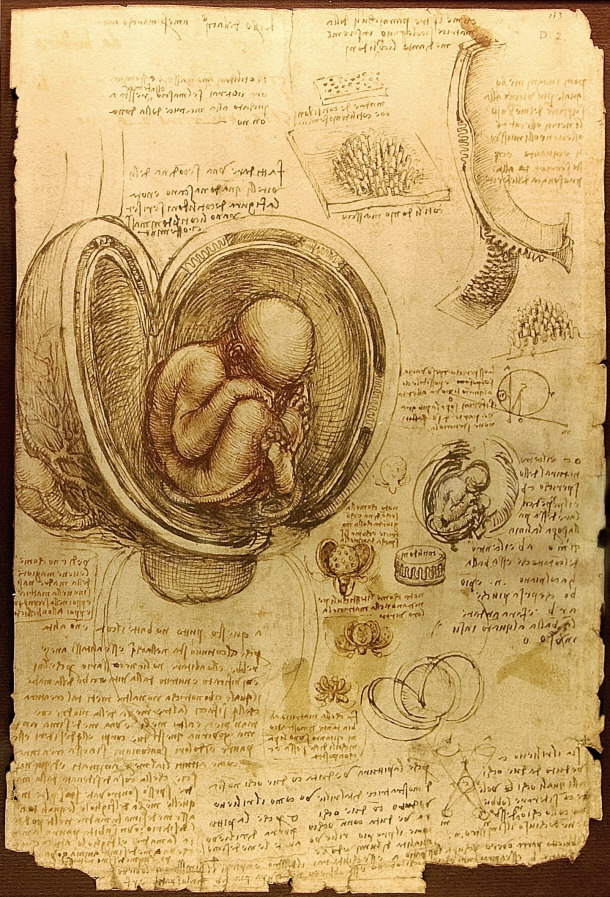
In response, artists often hid cadavers in catacombs of medieval villages for
the purposes of dissection, lest they be accused, according to the law, of
necromancy. This attitude prevented any advancements being made in medicine for
several hundred years. However, da Vinci broke through the barrier by obtaining
approval from Italian jurisdictions to dissect cadavers for sketching the heart,
the fetus in utero, and the muscular and vascular systems.
Studies of the Arm Showing the Movements Made by Biceps
- Leonardo da Vinci 1510:
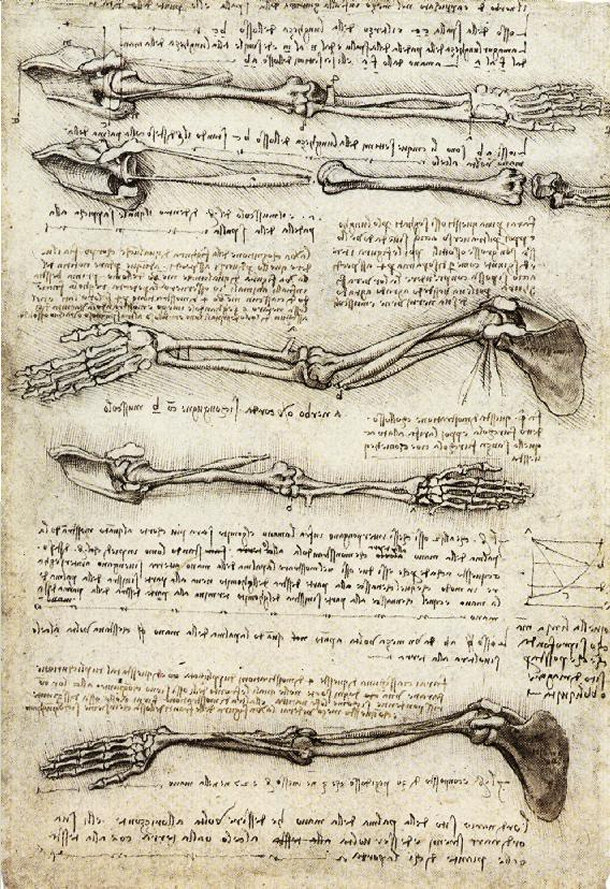
Because of da Vinci's writings and concepts, the scientist and painter was
considered eras ahead of his time. His paintings, notes, concepts and
philosophies have forever influenced intellectuals throughout history. The
following 15 facts then will showcase the artist and inventor's achievements as
well as introduce you to this Renaissance man.
15) The Town of Vinci, Italy Gave da Vinci His Surname
Born in Archiano, Tuscany, near the town of Vinci, Leonardo da Vinci
came into the world as Leonardo di ser Piero da Vinci. His father was a
prominent attorney and notary and his mother Caterina was a peasant woman. The
future famous artist had 17 half-siblings. Leonardo da Vinci's full name,
Leonardo di ser Piero da Vinci, translates to Leonardo, the son of Messer Piero
of Vinci.
While the Italian word ‘Messere’ can be translated to "Sir," it does not have
the same connotation as it would in medieval English. In the English version,
the title refers to a nobleman or knight. During his lifetime, Leonardo was
often simply referred to as Leonardo or II Florentine because of his close
proximity to the town of Florence.
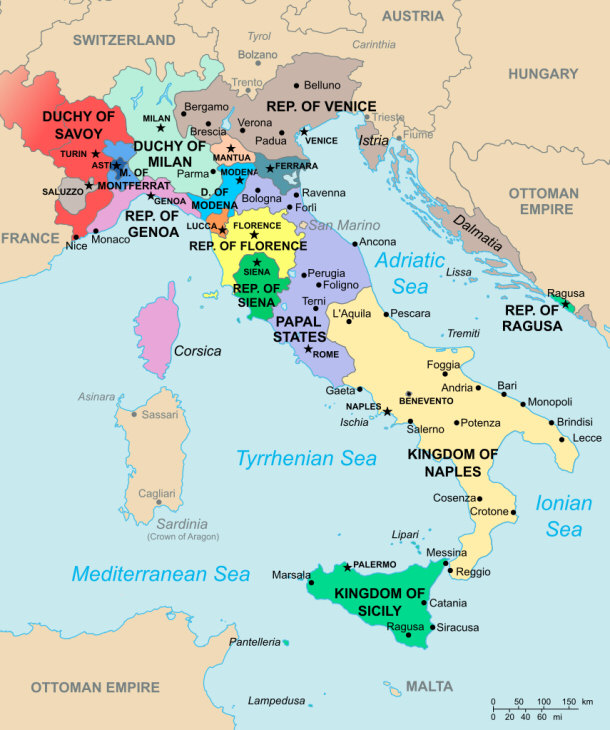
By Shadowxfox, via
Wikimedia Commons
14) Leonardo was a Self-educated
With so many fields of study, it’s easy to believe that Leonardo went through
several years of schooling at various universities or studied under the tutelage
of multiple teachers. However, the polymath was mainly self-educated.
Leonardo's schooling in geometry, mathematics and the scholarly language of
Latin is considered to be informal. He also received no schooling in Greek,
another scholarly language that was taught during the Renaissance period.
Leonardo became an apprentice at the age of 14, working for the artist,
Verrocchio, where he honed his artistic skills in such subjects as leather
making, carpentry, metalworking, drawing, carpentry, and sculpting.
Being forever curious, Leonardo da Vinci is considered the epitome of the
self-educated man.
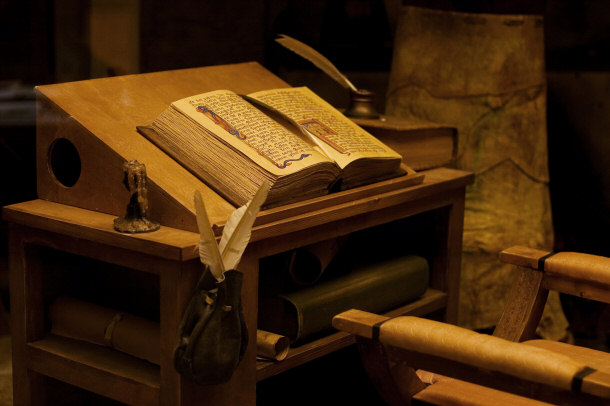
Verrocchio
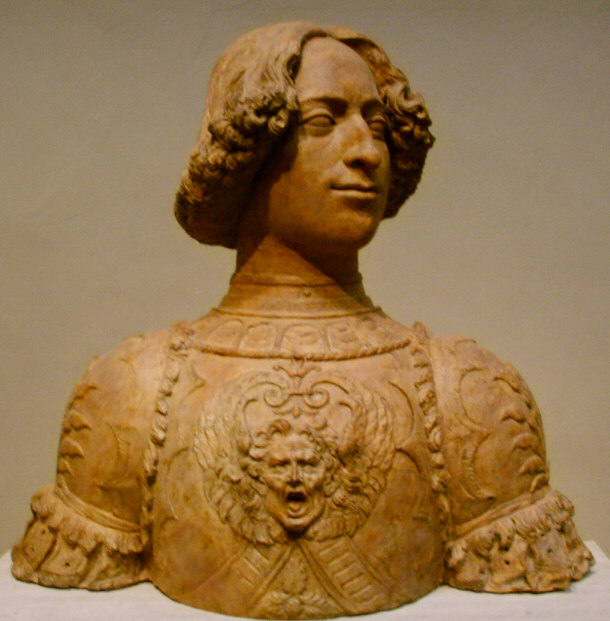
By sailko, via
Wikimedia Commons
13) Leonardo was a Notorious Procrastinator
It is said that Leonardo lamented, “Tell me if anything ever got
done”, before his death in Ambrose, France on May 2, 1519. This remark certainly
says quite a lot about Leonardo's tendency to become easily distracted. Because
his interests were so widespread, a simple stray thought could tear the artist
away from a commissioned project. As a result, da Vinci only finished some of
his works because his commissioners were sick and tired of waiting for their
artwork.
In fact, the artist's tardy delivery of commissioned paintings often
overshadowed his talents. For example, it took the artist years to complete the
painting, "Virgin on the Rocks," and the great painting, "Mona Lisa," was
considered a "work-in-progress" until the artist died. Although Leonardo lived
67 years, he only completed 15 paintings and a handful of architectural designs.
World famous art, such as the "Last Supper," was only completed when Leonardo
was in danger of losing funds for the project. Besides being distracted, the
artist was also a perfectionist. That's why he considered the painting, "Mona
Lisa," to be a work-in-progress. Although he officially completed the painting
between 1505 and 1507, he really never considered the artwork complete as he
kept the piece of art with him all of his life. The painting, which now hangs in
the Louvre in Paris behind a wood bar and bullet-proof glass, has been examined
with infrared technology.
Indeed, Leonardo kept perfecting the artwork as infrared rays showed a change
was made in the positioning of the middle finger and left index finger of the
hand and that a landscape was initially painted before transparency techniques
were introduced to paint Mona Lisa's veil. The picture depicts Lisa Giocanda,
the wife of an Italian merchant.
The Last Supper
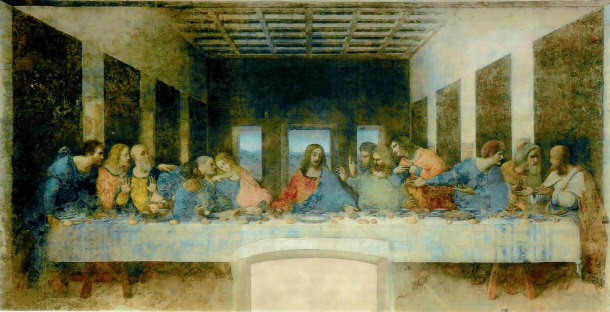
The Mona Lisa
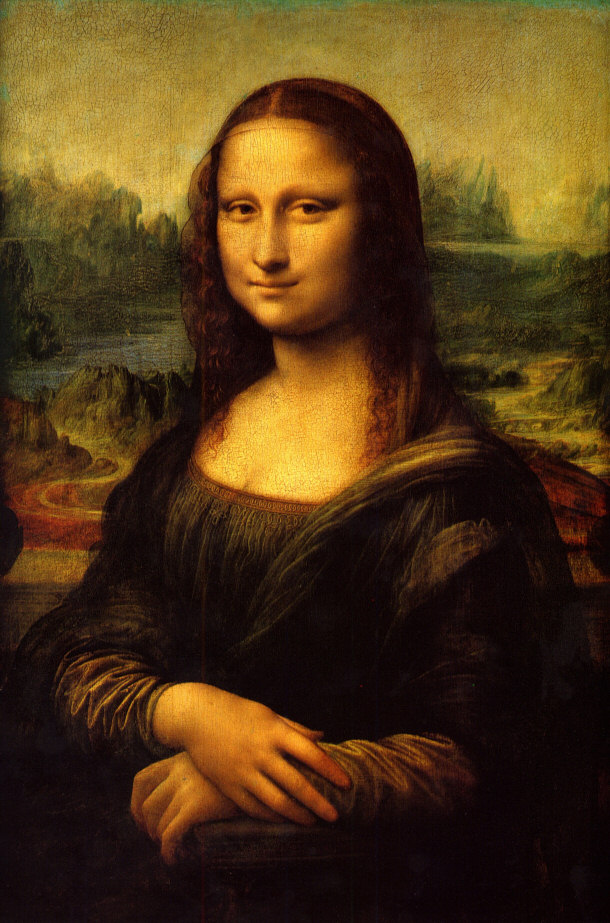
12) Leonardo Was Ambidextrous
While left-handed people know that writing, eating, or drawing with one's left
hand can present some difficulties in society, Leonardo adjusted to writing and
drawing with his left hand by doing the same activity with his right hand as
well. In fact, it's said that the artist and writer could write with both hands
simultaneously. Some accounts reveal that Leonardo could draw with one hand
while writing a mirrored script at the same time. Maybe that's the reason the
artist wrote so many volumes of notes.
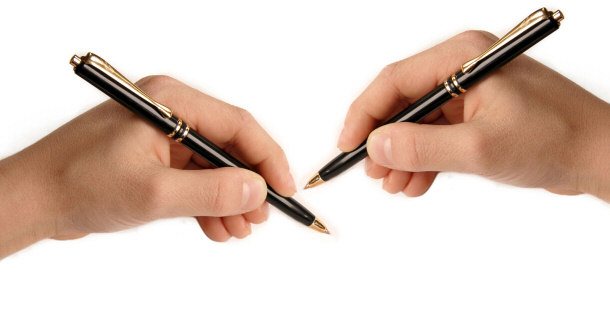
11) Leonardo Was a Musician of Sorts
|
Giovanni Maria Pala
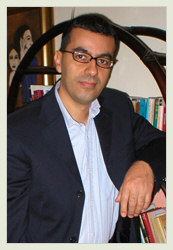
|
While Leonardo da Vinci was the first conceptual designer of the submarine
and helicopter, he also had a flair for music. One of his fifteenth century
sketches reveals an instrument that looks like it's part cello and
harpsichord. Horsehair is used for the strings for the unique instrument,
which was named a viola organista by the artist.
Also, in 1482, Lorenzo de Medici commissioned da Vinci to create a silver
lyre for him. The musical instrument was presented at the court of Ludovico
Sforza in Milan. Shaped like a horse's head, the lyre was played by da Vinci to
an audience. The artist learned to play the stringed instrument as a child,
which was a common practice of children who had wealthy and influential fathers.
Da Vinci could play other stringed instruments as well.
Ludovico Sforza
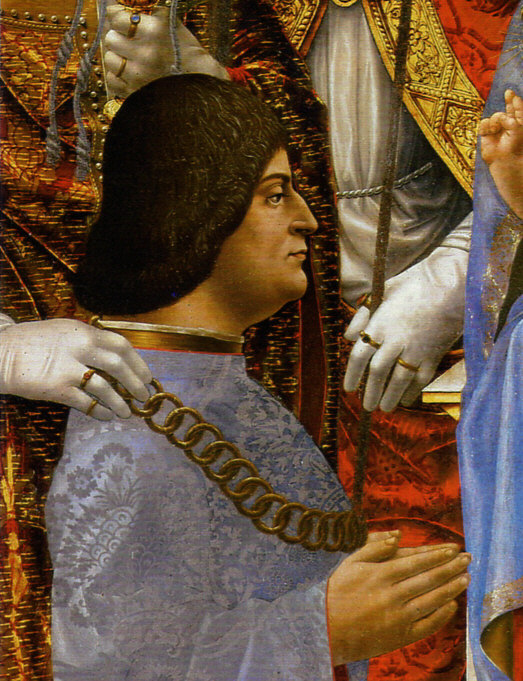
Lyre
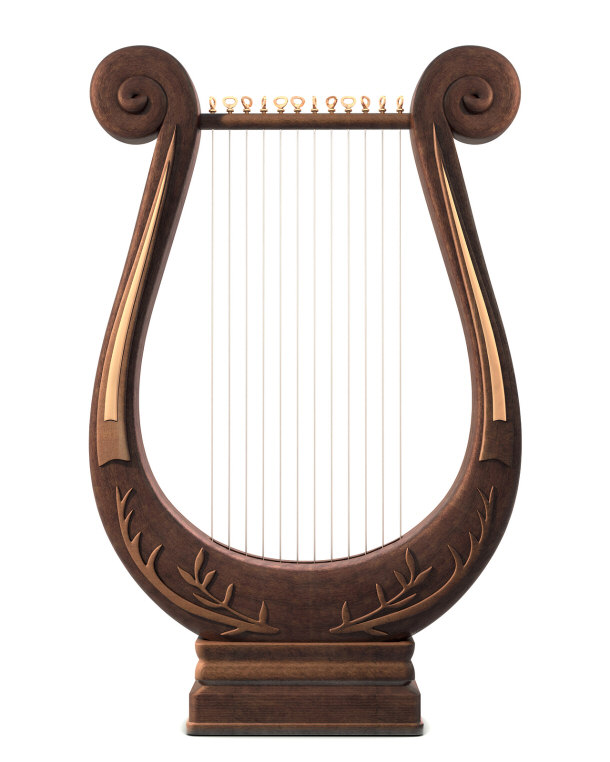
Lorenzo di Medici
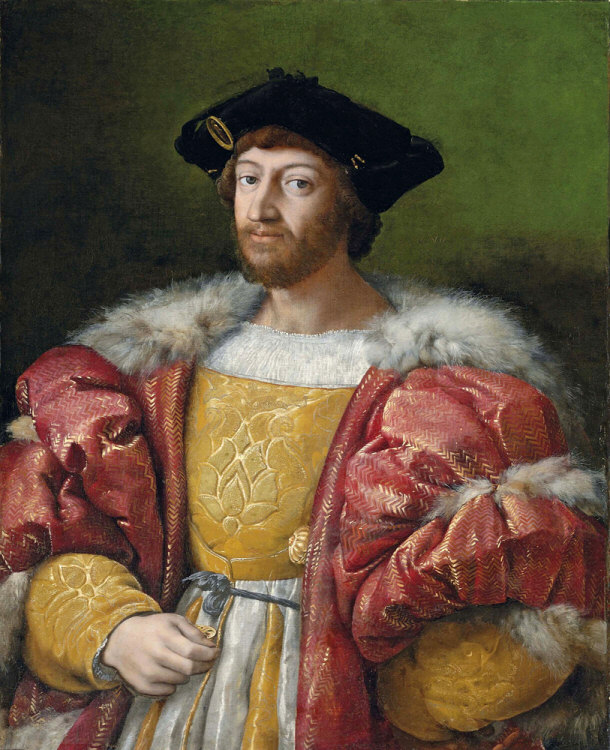
10) Da Vinci Loved Puzzles and Wordplays
The Earl of Arundel bought a particular collection of Leonardo’s notes in 1630,
which is now called the Codex of Arundel. The papers in the codex were written
in Leonardo's mirrored, left-handed writing, or from right to left, and is a
compilation of brief texts, drawings, and diagrams on science and art. Included
in the Codex is Folio 44, which essentially is a listing of synonyms for the
word, "penis." Notes also contained rebuses,or puzzle pictures, where a single
word or sentence can be derived from picture clues.
Folio 24v from the Codex of Arundel
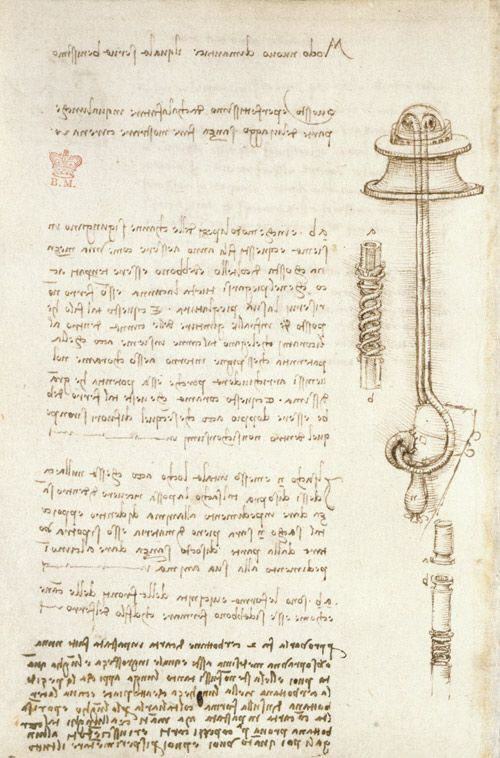
9) Da Vinci Really Didn’t Like Michelangelo
It's really not a big surprise that Leonardo da Vinci and Michelangelo made each
other's acquaintance, especially since they both were artists and Florentine
citizens. Plus, both the renowned painters were favored at the Milanese court by
Lorenzo de Medici.
Michelangelo
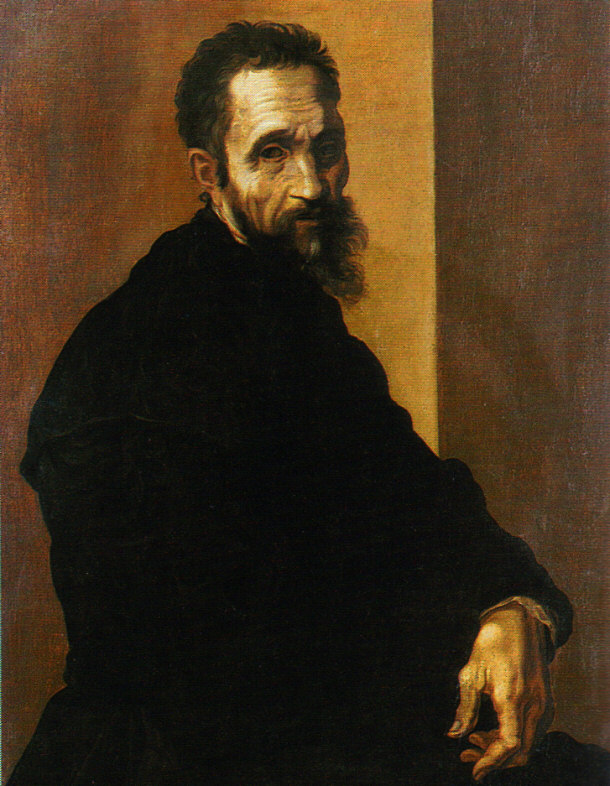
However, both artists had contrasting personalities, which made them
professional rivals. While Michelangelo, also known formally as Michelangelo di
Lodovico Buonarroti Simoni, was characterized as a young man that was often
quick to anger or impatient, Leonardo was just the opposite, given his
proclivity to procrastinate. Some believe that the older artist was jealous of
the younger painter and, thus, began a rivalry with thinly veiled insults.
Leonardo once said that sculptors were very much like a baker, all which
would have easily angered the younger artist, who considered himself to be a
premier sculptor of art. Other observers believe that the younger artist could
have been jealous of Leonardo's genius. Vasari, a biographer who chronicled both
men's lives in the 16th century, confirmed that Leonardo and Michelangelo were
not very good friends.
Vasari
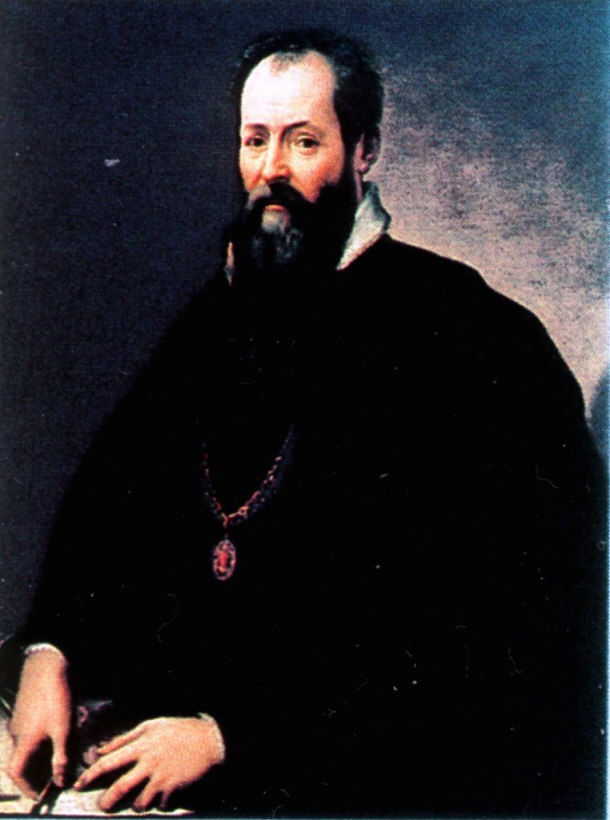
The Codice Magliabecchiano, an anonymous manuscript, refers to an incident
when the two artists met near the Santa Trinità church in Florence. After the
meeting, Michelangelo was heard calling after Leonardo that he was a "horse
modeler" who had no sculpting skills. The reference was associated with a bronze
horse statue project that Leonardo had undertaken in Milan. However, the
sculpture only got to the stage of a clay model because of a siege by French
soldiers in the city.
Santa Trinità church
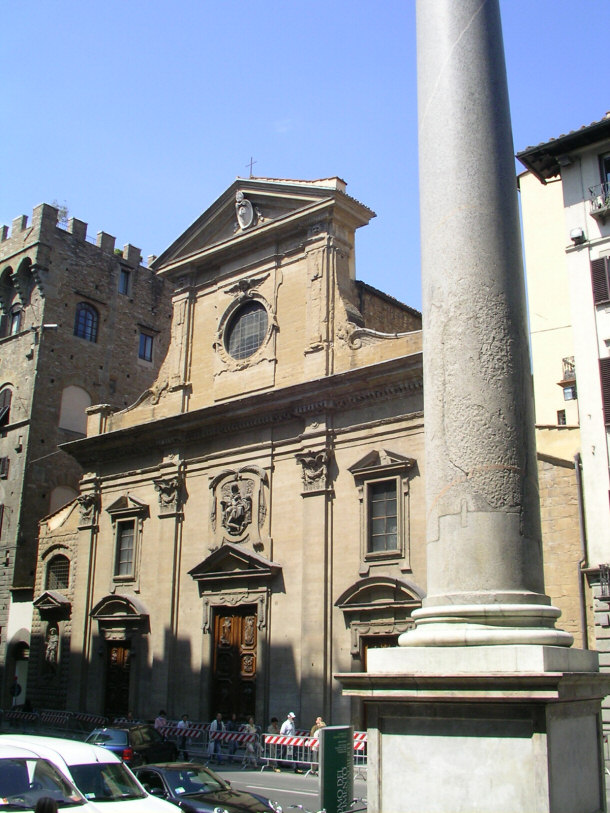
By unknown, via
Wikimedia Commons
8) Da Vinci's Thoughts were Based on Empiracal Evidence
During his life, Leonardo did not accept opinions or actions unless they could
be verified, and therefore based any observation on experience or verification
rather than religious reasoning. In fact, according to a biography penned by
Marco Rosci, Leonardo believed that "Anyone who conducts an argument by
appealing to authority is not using his intelligence. [Rather,] he is using his
memory [instead]."
Because of Leonardo's interest in science, the majority of the artist's and
polymath's writings concern observation. Therefore, da Vinci sought to gain as
much knowledge about the world as he could. As a result, Leonardo did not hold
to the dictates and rituals of the Catholic Church, which, at the time, was held
in high regard.
Although he painted the "Last Supper" and believed in God, Leonardo still
liked to challenge established beliefs by critically questioning the literature
that he studied and read. Leonardo, who was a writer of short stories, critiqued
the practices of the Roman Catholic church in one of his writings. For example,
he addressed the blessing of items with holy water.
One of his writings relates the story of a priest who sprinkles holy water on
some paintings, after which he declares them as good, adding that he would be
rewarded a hundredfold by the heavens. In response to the damage caused by the
ritual, the painter dumps a bucket of water onto the priest's head when he
passes beneath a window.
Leonardo also suggested that the earth was older than what the Catholic
Church advocated as true - all which put him into direct opposition with the
Church.
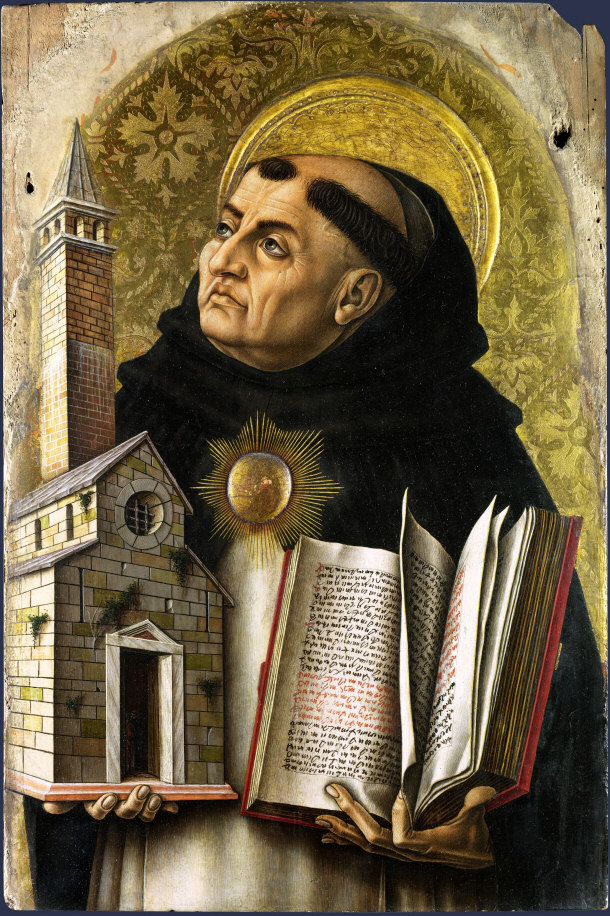
7) Da Vinci Introduced the Chiaroscuro Method to the Art World
While da Vinci was primarily attracted to science, his popularity and fame
resulted from his work as a painter. Although he finished only a limited number
of paintings, his most famous works are considered masterpieces. Paintings, such
as "Mona Lisa" and the "Last Supper," have been reviewed by art students as well
as art aficiandos and critics. Highlighted in da Vinci's work is the way he lays
on paint and his precise detailing of tone.
The artist was also one of the first painters to use the medium of oil during
the High Renaissance period. Subtle lighting techniques were employed as the
artist generally liked to paint in the evening just before the sun went down.
Noted as the first artist to utilize consistent coloration, da Vinci was able to
achieve both intensity of depth in color and transparency. For example, in the
painting, Portrait of a Lady from the Court of Milan, Da Vinci painted the
picture with a wider range of luminescence than what could be seen in reality.
The above-mentioned painting style, which makes skillful use of dark and
light paints, is referred to as chiaroscuro, a kind of shading that emphasizes
brightness more than color.
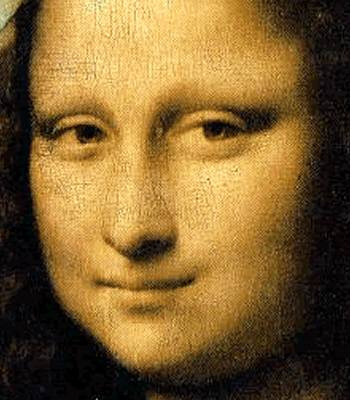
6) Da Vinci Was Obsessed with the Anatomy
Da Vinci's sketch of the Vitruvian Man is probably one of the artist's most
popular drawings. In turn, his observations and study of the human anatomy are
not only of interest to students studying medicine but also to artists who want
to better capture the details of the human form.
Leonardo makes several observations on the proportions of an average man in
the Vitruvian Man and the text accompanying it. According to his writing, “[T}he
length of the ear is one third of the length of the face." The observations he
made in association with the Vitruvian Man were not only helpful in his artwork
but also in his studies of architecture. Because of his notations, he was
inspired to study the life of the Roman Marcus Vitruvius Pollio.
Vitruvius wrote the Ten Books on Architecture, more commonly known as De
Architectura, where he declared architecture to be an imitation of nature. He
defined the Vitruvian Man to cement his arguments on the value of proportion.
Leonardo’s work on documenting the human anatomy was furthered through his
dissections on corpses, which he conducted in Florence, Milan, and Rome - a
major undertaking at the time as the Roman Catholic Church did not normally
permit dissection, viewing it as a form of desecration.
In turn, the artist was able to create over 240 drawings on the anatomy. He
produced some of the first drawings of specific organs on record. Sketches
include drawings of the fetus in utero, the heart and vascular system, bones and
muscles, and the sexual organs.
Because of his sketches, Leonardo is considered to be an early pioneer in the
field of biomechanics.
Vitruvian man
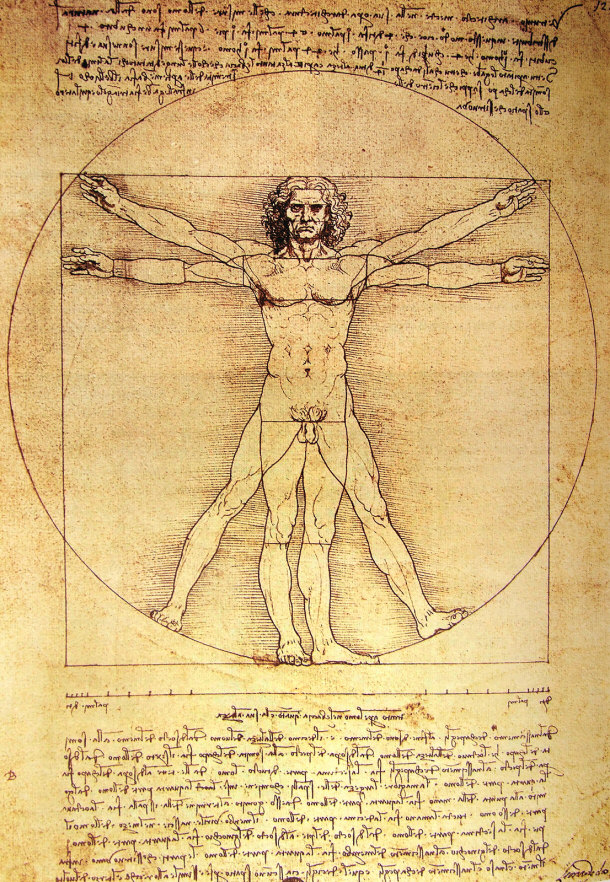
Fetus in a woman’s womb
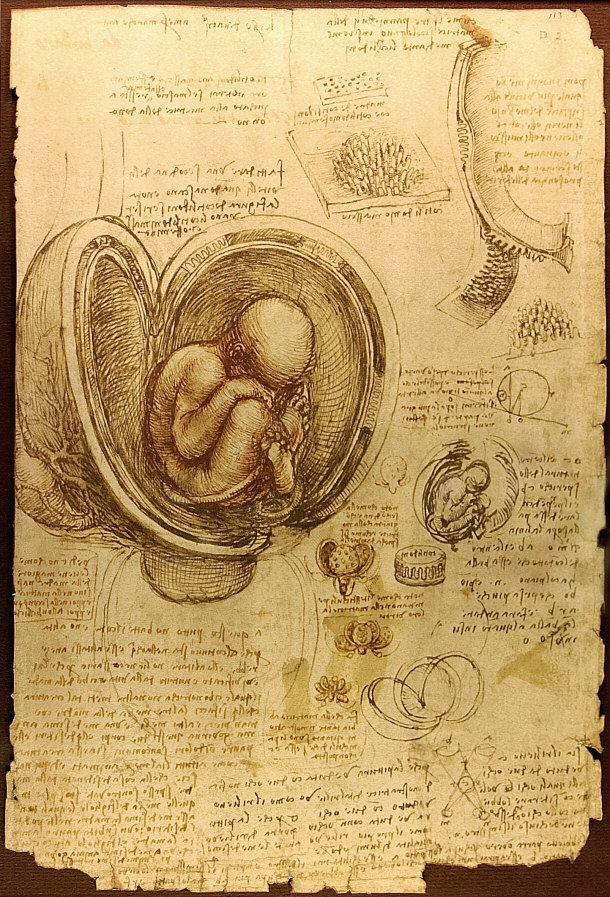
5) Evidence Suggests That da Vinci Was a Vegetarian And Animal Rights Activist
Leonardo da Vinci asserted that "[humans] . . . do not have any God-given right
to eat our fellow creatures," thereby contradicting the belief prevalent at the
time that eating meat was alright. Because the artist had a great affinity for
nature, he did not advocate any cruelty toward or confinement of animals. The
polymath even bought caged birds in markets just to set them free.
4) Questions about da Vinci's Sexuality Still Exist Today
According to historical court documents in Florence, da Vinci was charged with
sodomy when he was 22. However, he was eventually acquitted of the crime. At the
time, the young man was serving as an apprentice under the artist, Verrochio.
Still, people continued to speculate about the artist's sexual preferences. Da
Vinci, who never married, left his estate to his assistant Francesco Melzi, who
was also believed, by some, to be da Vinci's lover as well.
Da Vinci also had a long-term companion before he met Melzi by the name of
Gian Giacomo Caprotti da Oreno. The boy was brought into the da Vinci household
when he was 10 and maintained a 25-year relationship with the artist. Nicknamed
Salai or "little devil," Giacomo was stole money and clothing from da Vinci in
his youth.
Sigmund Freud
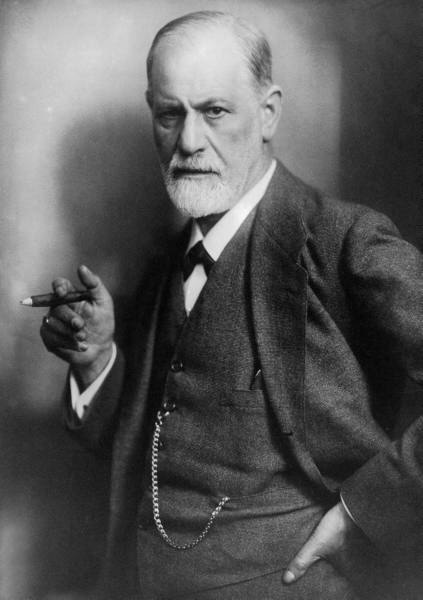
3) Da Vinci
Conceptualized Inventions Long Before their Time
Though Sebastian Lenormand took credit for inventing the parachute, actually
Leonardo da Vinci conceived the concept hundreds of years earlier. In fact, most
of the concepts that da Vinci introduced in sketches and notes took hold long
after he was gone.
Da Vinci was the first person to conceive the design of the helicopter and
also sketched models of early flying machines, all which were based on the
aerodynamics of a bat in flight. The inventor, artist and scientist also came up
with such innovations as the anemometer (used to measure wind speed), the
armored car, scuba gear, a revolving bridge, and the giant crossbow.
The flying screw, Leonardo's Helicopter
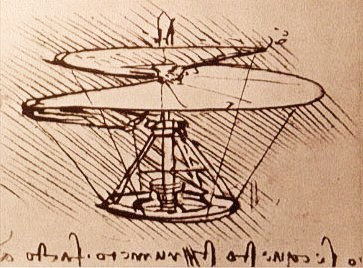
Giant Crossbow
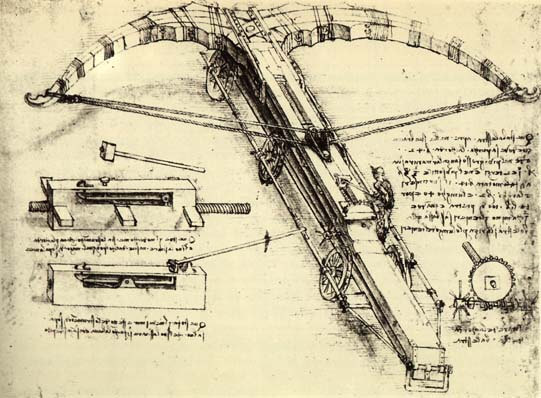
Ribauldequins
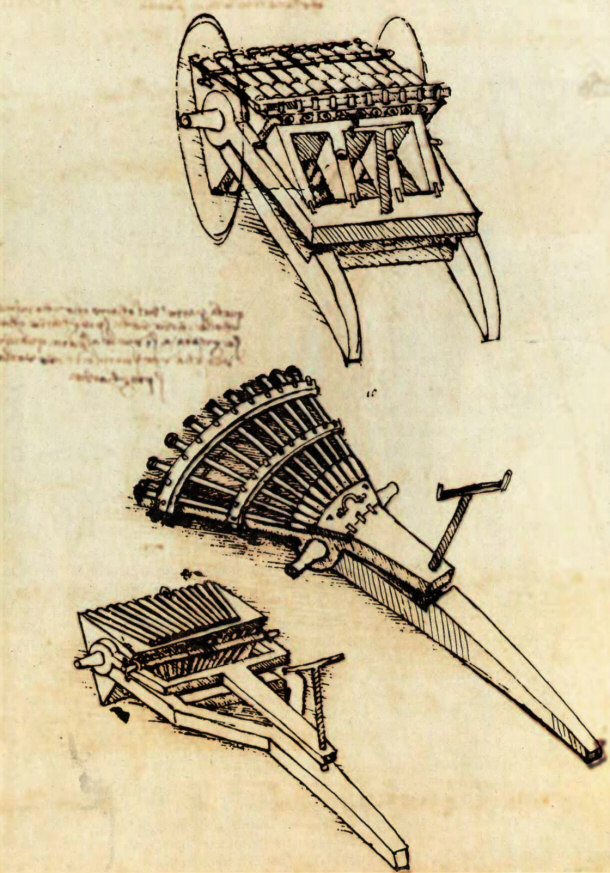
2) Leonardo Was an Engineer
Leonardo extended his interest in the workings of things and science through
ideas for weaponry and bridges. His skills were noted in his role as military
architect and engineer to Cesare Borgia, who was the son of Rodrigo Borgio,
elected as Pope Alexander VI. Da Vinci's revolving bridge idea made it possible
to form a temporary bridge across a waterway so soldiers could pass over to the
other side.
The bridge was designed with ropes and pulleys and wheels for a quick
deployment. A counterweight tank was included to balance the connection as well.
A fast-construction bridge was also engineered by da Vinci, which enabled
soldiers to cross more than one stream at a time.
Pope Alexander VI
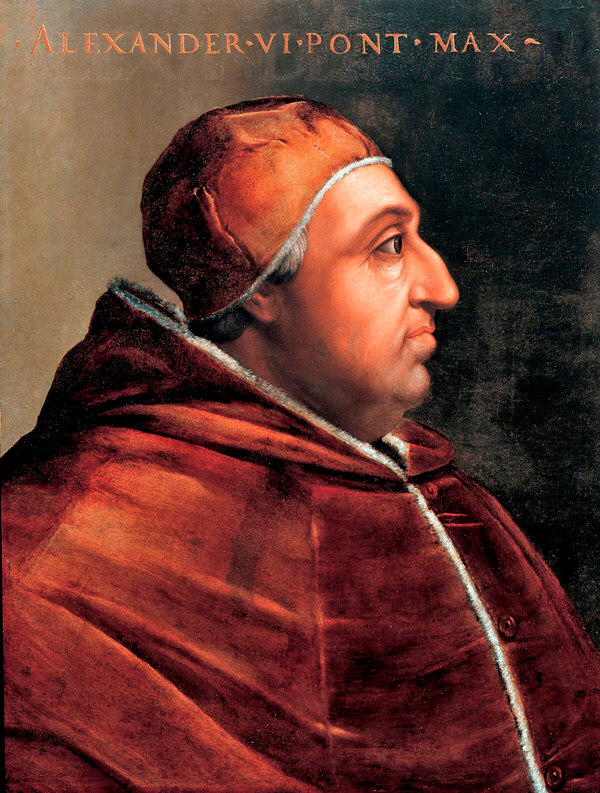
Sulton Bayezid II
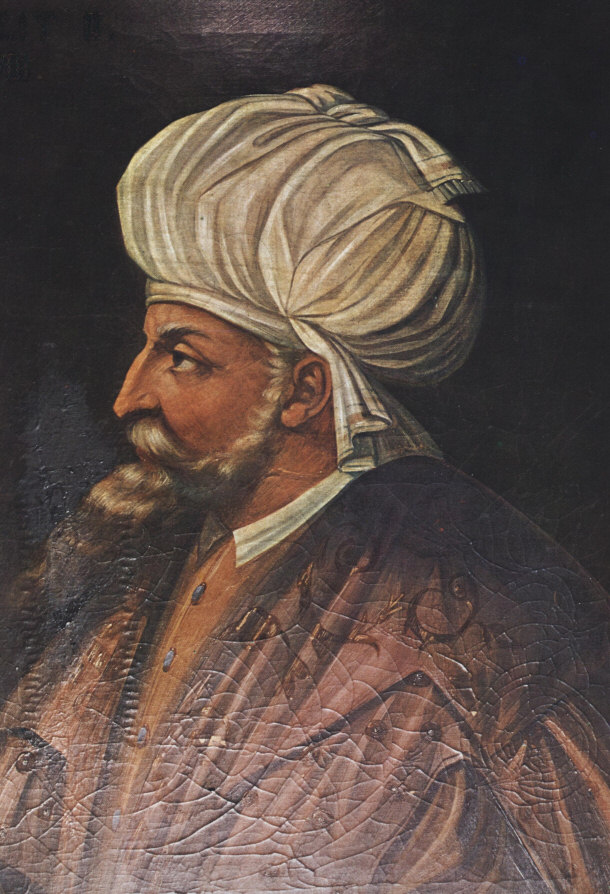
Golden Horn Bridge Notes
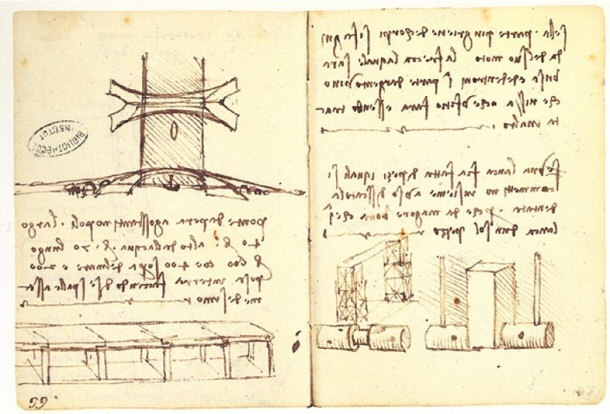
Norway bridge created from Golden Horn bridge notes

By Åsmund Ødegård from Norway, via
Wikimedia Commons
1) Leonardo Was the Archetypal Depiction of the Renaissance Man
Because da Vinci showed his skills in one of a variety of scientific and
artistic areas, he can only be described as the archetypal Renaissance man. His
notes, drawings, and paintings have all contributed to the worlds of art,
science, engineering, geology, math, and cartography.
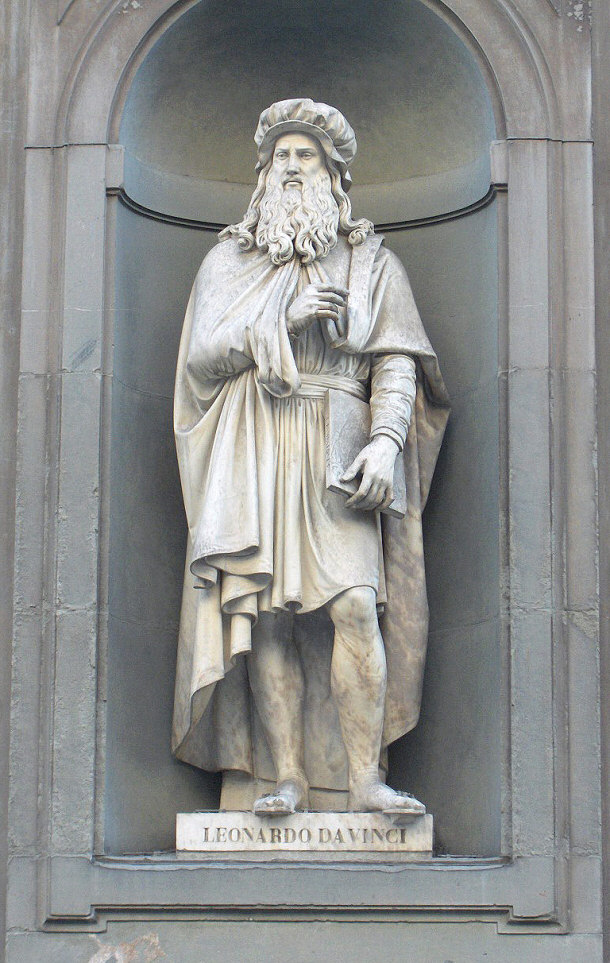
Final Words
A futuristic thinker and creative genius, Leonardo da Vinci continues to impress
and influence people in the modern age. His contributed works have set him apart
as one of the greatest minds in history.
Specific People
15 Things You Should Know About Stephen Hawking
15 Fascinating Facts about Michael Jackson
15 Fascinating Facts about Al Capone
15 Interesting Facts about Mother Teresa
15 Interesting Facts about Walt Disney
15 Interesting Facts about George Washington
15 Interesting Facts about Gandhi
15 Interesting Facts about Franklin Roosevelt
15 Interesting Facts about Ben Franklin
Top 15 Interesting Facts about Archimedes
15 Little Known Facts about Martin Luther King
15 Interesting Facts about Ronald Reagan
15 Interesting Facts about Nelson Mandela
15 Interesting Facts About Shakespeare
15 Interesting Facts about Marie Curie
15 Interesting Facts About Julius Caesar
15 Interesting Facts about Leonardo Da Vinci
15 Interesting Facts about Captain James Cook
15 Interesting Facts about John F. Kennedy
15 Interesting Facts About Cleopatra
15 Interesting Facts about Barack Obama
15 Interesting Facts About Albert Einstein
15 Interesting Facts about Adolf Hitler
15 Interesting Facts about Christopher Columbus
15 Interesting Facts About Bill Gates
People Related
15 Most Bizarre Things Purchased by Celebrities
Top 15 Reasons Why People Commit Suicide
25 Individuals Who Thrived with Savant Syndrome
20 Celebrities Who Invented Amazing Things
Top 15 Drugs People Commonly Overdose and Die From
Top 15 Myths about Death
15 Unusual Ways People Have Died
15 Crazy Festivities Around the World
55 Celebrities With Physical Imperfections
15 Funny and Unusual Ways Interviews Have Been Held
15 Weird Ways People Improve Their Confidence
15 Of the Darkest Crime Personalities We Hope to Never Meet
15 People Who Killed for a Living
15 Famous Celebrity Meltdowns
14 Fun Activities That Have Ended Up In Death
15 Facts & Info About Human Trafficking
Shorter Top Lists:
10 Billionaires as Wasteful or Fanciful as They are Wealthy
10 Ruthless Serial Killers Who Were Never Caught
10 Dangerous Serial Killers
Informational:
Detecting Lies: How to Tell Whether or Not Some is Truthful
Cannibalism in History and the Modern World
What Your Favorite Color Reveals About You
What is a Weirdo? Defining Weirdness in Society
Media's Effect on Society
How to Attract Beautiful Women |